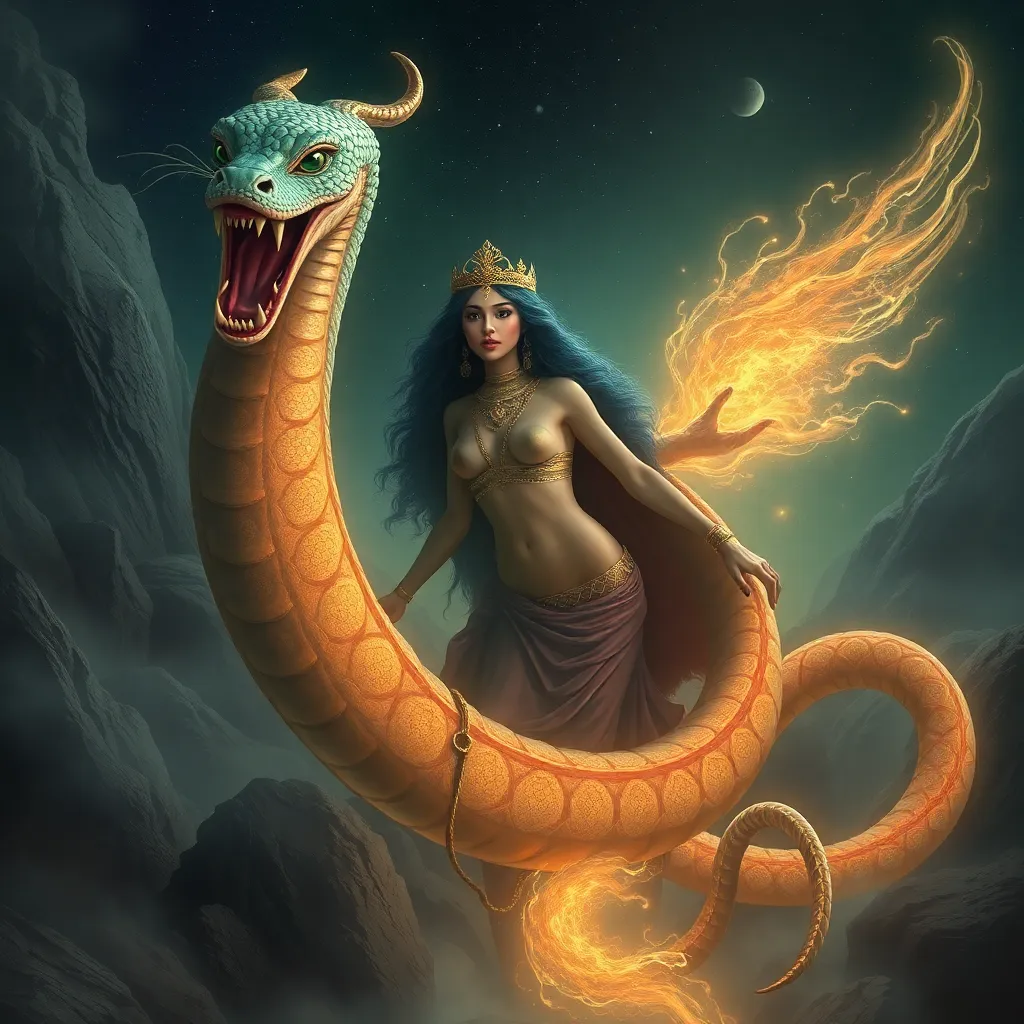Lamia’s Journey: Tracing the Serpent Woman’s Travels Across Myths and Legends
I. Introduction
Lamia, a figure steeped in the rich tapestry of mythology, has captivated the imaginations of storytellers and audiences alike. Originating from ancient Greek mythology, Lamia embodies the archetype of the serpent woman, a symbol that resonates across various cultures and eras. Her story intertwines themes of love, loss, and transformation, making her an enduring character in the realm of myth.
Throughout history, serpentine figures have held significant places in global folklore, often representing duality, danger, and femininity. This article aims to explore Lamia’s origins, her evolution through literature and art, her presence in various cultures, and her impact on modern society. By tracing her journey across myths and legends, we can gain insights into the complexities of her character and the symbolism she embodies.
II. Origins of Lamia in Ancient Greek Mythology
The story of Lamia in Greek mythology is a tragic tale that begins with her as a beautiful queen of Libya, loved by Zeus. However, her life takes a dark turn when Hera, Zeus’s wife, becomes jealous and punishes Lamia by killing her children. In her grief, Lamia is transformed into a monster, cursed to wander the earth, preying on the children of others in a desperate attempt to alleviate her own pain.
This transformation highlights Lamia as a tragic figure, embodying themes of love, loss, and revenge. Her character serves as a poignant reminder of the consequences of jealousy and the suffering that can arise from unfulfilled desires.
In Greek culture, the serpent symbolizes various concepts, including wisdom, danger, and transformation. Lamia’s serpentine form reflects these qualities, as she becomes both a figure of fear and a representation of the complexities of femininity. Her story raises questions about the nature of womanhood and the societal expectations placed upon women.
III. Lamia’s Representation in Literature and Art
Throughout history, Lamia has been depicted in various literary texts and artistic interpretations. Ancient poets such as Hesiod and Ovid have immortalized her story, contributing to the rich tapestry of Greek mythology. In Hesiod’s works, Lamia is portrayed as a monstrous figure, while in Ovid’s “Metamorphoses,” her tragic backstory is explored in more depth, emphasizing her sorrow and the cruelty of fate.
Artistic interpretations of Lamia have varied across the ages, from ancient pottery depicting her as a fearsome creature to Renaissance paintings that capture her beauty and tragedy. These representations often reflect the societal attitudes toward women, particularly the tension between femininity and monstrosity.
- In ancient art, Lamia is often depicted with serpentine features, emphasizing her transformation.
- During the Romantic period, artists portrayed her as a tragic figure, evoking sympathy for her plight.
- Modern literature has evolved to depict Lamia in diverse ways, sometimes as a heroine or a complex anti-heroine.
IV. Comparative Analysis of Serpent Women in Global Myths
Lamia is not an isolated figure within mythology; similar serpent women appear in various cultures around the world. For instance, Lilith from Jewish folklore is often depicted as a demoness and a figure of female empowerment, while the Naga in Hindu and Buddhist traditions are serpentine beings that can embody both benevolence and malevolence.
When comparing these figures, several common themes and differences emerge:
- Common Themes:
- The duality of femininity: both nurturing and destructive.
- The consequences of love and betrayal.
- The struggle for empowerment in patriarchal societies.
- Differences:
- Lamia primarily represents loss and revenge, while Lilith embodies independence and defiance.
- Naga are often portrayed as protectors of water and fertility, contrasting with Lamia’s more vengeful nature.
The serpent archetype carries significant weight in these narratives, symbolizing the complexities of female identity and the societal perceptions of women throughout history.
V. Lamia’s Influence on Popular Culture
In contemporary culture, Lamia has found new life in film, television, and video games. Her character often appears as a seductive and dangerous figure, reflecting modern interpretations of femininity and power.
- Films: Various horror and fantasy films have drawn inspiration from Lamia, depicting her as a mythical antagonist.
- Television: Series such as “Supernatural” have featured Lamia in episodes exploring mythological creatures, often reimagining her story for a modern audience.
- Video Games: Characters inspired by Lamia appear in popular games, highlighting her allure and danger.
This resurgence of Lamia in contemporary storytelling often diverges from traditional myths, emphasizing themes of empowerment, sexuality, and revenge. Modern interpretations frequently explore the duality of her character, portraying her as both a victim and a powerful force.
VI. The Psychological and Symbolic Interpretations of Lamia
From a psychological perspective, Lamia’s character can be analyzed through various lenses. She embodies the archetype of the “femme fatale,” a woman whose beauty and allure lead to destruction. This portrayal taps into societal fears surrounding femininity and sexuality.
Additionally, Lamia’s narrative can be seen as a reflection of the role of fear and femininity in mythology. Her transformation into a monster is often interpreted as a societal response to women’s anger and pain, particularly in the face of betrayal and loss.
Moreover, Lamia’s story can serve as a metaphor for female empowerment and vengeance. Rather than being a passive victim, her character evolves into a figure of strength, reclaiming agency in her narrative. This complexity allows for a deeper understanding of women’s struggles and resilience throughout history.
VII. The Legacy of Lamia: Continuing the Myth in Modern Society
Lamia’s legacy continues to resonate in modern society, particularly within feminist discourse. She serves as a symbol of transformation and resilience, representing the struggles women face in a patriarchal world.
As a serpent woman, Lamia embodies the complexities of identity, challenging traditional notions of femininity. Her story encourages dialogue around female empowerment and the reclamation of narratives that have historically marginalized women’s voices.
Looking ahead, Lamia’s presence in myth-making can evolve further as contemporary storytellers continue to engage with her character. By reinterpreting her story, new generations can explore themes of empowerment, vengeance, and transformation, ensuring that Lamia remains a relevant figure in the ever-changing landscape of mythology.
VIII. Conclusion
In conclusion, Lamia’s journey through myths and legends reveals her significance as a multifaceted character. Her story resonates across cultures and eras, highlighting the enduring legacy of serpentine figures in human storytelling. As we explore and engage with mythological narratives, we uncover the complexities of identity, power, and transformation that continue to shape our understanding of the world.
From ancient Greece to modern interpretations, Lamia’s tale invites us to reflect on the narratives we create and the symbols we embrace. As we delve into these mythological figures, we discover not only their stories but also the truths they reveal about the human experience.



